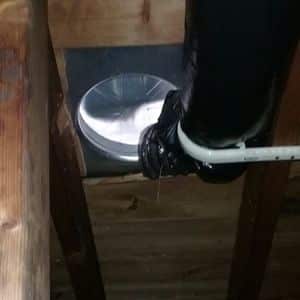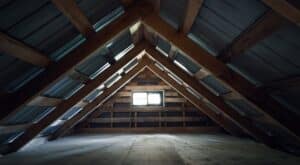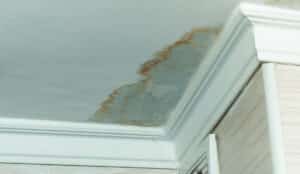Reducing attic moisture
In a previous blog, we outlined the need for proper attic ventilation in the Grand Rapids area. Mold growth, ice dams, high energy bills, and deteriorating roof decking are all effects of insufficient airflow in an attic. Proper ventilation flushes excess heat and attic moisture once it’s in the attic. But another part of the picture is finding out how much heat and humidity are entering the attic in the first place.
Humidity from the house gets into the attic through the ceilings, notably where a good vapor barrier is lacking. We’ll talk more about the insulation and vapor barrier issues in later blogs, but one of the significant problems we encounter that add to moisture in attics is penetrations through ceilings! A primary culprit has improperly connected ventilation fans. Fans in bathrooms or kitchens are put in place to pump moisture through the roof, and, of course, heat goes along with it. What happens from there is, for the most part, out of sight. Such ducts need to be insulated and connected to a vent on the rooftop. If not connected to a roof vent, the heat and moisture are merely dumped into the attic. If not insulated, the moisture condenses on the cold air ducts and, this now water, finds a way back down into the house. This problem often is thought of like a roof leak.


These pictures above show a couple of the mistakes we often find made with the ductwork from kitchen and bathroom fans. The view on top is an example of the wrong roof vent for the pipe. What should be installed is a bath vent instead. The picture on the bottom is a tube that isn’t insulated and apparently isn’t venting through the roof, therefore dumping all that moisture right into the insulation.
Above Roofing and Exteriors is concerned with the roofing system as a whole as well as the overall security and well being of our customers’ homes. Therefore, we inspect attics when making calls to evaluate roofs. Connecting ventilation fans to roof vents using insulated ducts is one of the things we do to make sure all roofing components work together to give our customers in the greater Grand Rapids area the best, longest-lasting value.




